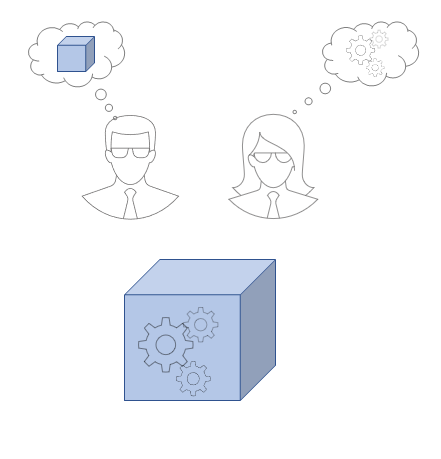Appearance
The Darkness Principle
- Subject
- Empower people / the agile organization
- Participants
- Stakeholders / managers (optional), the entire agile team
- Facilitator
- Agile Coach / Agile Master

Summary
As organizations are complex systems, it's understandable that teams have to take decisions together. This follows from the "Darkness Principle".
Definition
The "Darkness Principle" states that each agent in a system is ignorant of the behavior of the system as a whole. If an agent 'knew' the entire system, all the complexity of the entire system would have to present in that agent [Cilliers: 1998:4-5]. As a consequence, each team member possesses only a partial and incomplete mental model of the entire project. That's the reason behind a common planning and decision making. Scrum and Extreme Programming are fully applying this model by requesting the entire team to be present during daily stand-ups and Scrum planning meetings. Managers often feel that they lose control if the teams decide together and often without them. Any actions to control teams, don't work long-term and lead to team's demotivation.
Motivation
Increases self-organization of agile teams and organizations.
Results
A motivated and self-organized team where every member is aware of all the things and interactions that happen within the team.
Benefit
Nobody in an organization or a team has a complete view of all the things that happen. If teams are allowed to solve their problems and to make decisions together and by themselves, the manager / the organization actually increases the control over the situation from a positive perspective. The "Darkness Principle" makes it transparent that the manager has to delegate the micromanagement to the agile team.
Procedure
The "Darkness Principle" can be introduced as an open discussion in teams, workshops with the management and stakeholders and also within the organization. Best practices have shown that summarizing the "Darkness Principle" with some keywords written on a wall in the team spaces, makes it more transparent and easier to remember. It is also visually available to everyone in the organization and is a good method to bring people back to the core of the agile process.
Tools
Flipchart / Whiteboard or as a free conversation, Decision Poker, Delegation Poker
Hints
Keeping the theory of the JoHari Window in mind, you know that not everyone - including yourself - shares all available knowledge or information.
See also
Jurgen Appelo 'Management 3.0 Leading Agile Developers, Developing Agile Leaders'